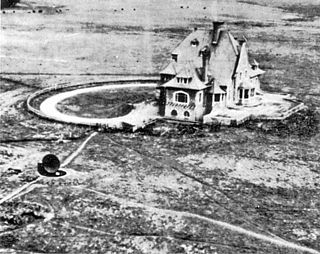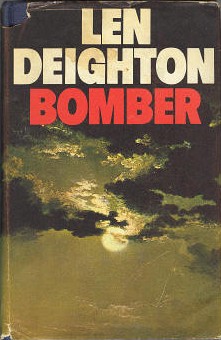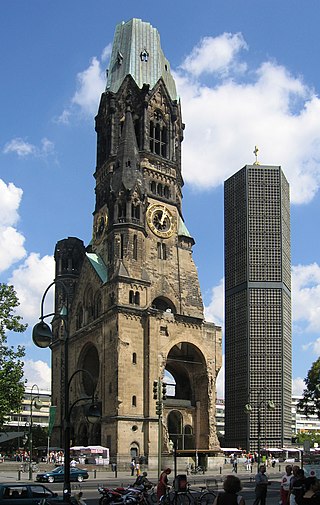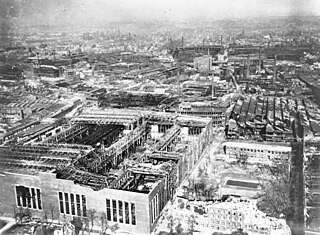
Hornet Flight is a Second World War-based spy thriller written by British author Ken Follett. It was published in 2002 by Macmillan in the UK and Dutton in the US.

Hornet Flight is a Second World War-based spy thriller written by British author Ken Follett. It was published in 2002 by Macmillan in the UK and Dutton in the US.
By late June 1941, the United Kingdom alone stood against Nazi Germany on the Western Front. In the East, the Soviet Army was feeling the full force of Operation Barbarossa. To show solidarity among the unlikely capitalist-communist Alliance, Winston Churchill and Bomber Command planned a massive aerial bombardment of German territories. Unfortunately and inexplicably, Bomber Command's planes were getting shot down in record numbers.
Meanwhile, 18-year-old Danish schoolboy Harald Olufsen grows increasingly dissatisfied with his country's cooperation with the German invaders. His resentment of the Wehrmacht leads him to discover the truth about a hidden military installation, a truth known to only a select few in the Nazi organization. Running from the German authorities and an old family enemy, Copenhagen police detective Peter Flemming, Harald knows that he must get to Britain. But to do so in time to save the bombers, Harald has one option: flight.
Hornet Flight is a fictionalized retelling of actual events. Follett's website states that his inspiration for the story came from Leo Marks, a former Special Operations Executive employee, who wrote a brief account in his book, Between Silk and Cyanide: A Codemaker's Story 1941-1945 about two young Danes who found a derelict de Havilland Hornet Moth biplane, repaired it, and flew it to Britain. While that event inspired the use of two teen-aged Danes as his primary characters, the story of the photographing of the German radar station and flying the film to Britain was actually that of Thomas Christian Sneum, a Flight Lieutenant in the Danish Naval Air Service, who made the flight to Britain on 21 June 1941 in a Hornet with Keld Peterson, the mechanic who helped him rebuild it. Sneum was arrested as a suspected double agent before being returned to Denmark as an agent, from which he escaped again in 1942 by crossing the ice to Sweden with a fellow naval aviator.
The German radar installations causing the havoc with the British bombers are historical. The Freya radar that Harald investigates was part of the Kammhuber Line, the German night air defense system along the North Sea. The Freya radar, with a range of 100 miles, was used to detect any incoming bombers at long-distance. Then 2 modified Würzburg Riese ("Würzburg Giant") radars tracked a single British bomber and a German night fighter to bring them together. The RAF tactically countered the line by concentrating all its bombers through a single radar sector in a "bomber stream", allowing the bulk to escape interception because the system could only concentrate on one bomber at a time.
However the actual events alluded to in Hornet Flight occurred a year later than in the novel, and without connection to the German invasion of the Soviet Union. The Himmelbett structure of radar installations did not become operational until late 1941. RAF bomber losses increased by 50% in the first months of 1942, but the trend was reversed with the first "thousand bomber raid" on Cologne on 30 May 1942. The concept of the bomber stream was not the result of espionage by Resistance operatives in any occupied country, but resulted from statistical analysis of British operations.
The strict Protestant community in which Harald Olufsen grew up and against which he rebels in the earlier part of the book is typical of those dominated by the religious movement known as "The Church Association for the Inner Mission in Denmark", of which West Jutland is a stronghold.
Unlike formulaic action thrillers, the German characters in Hornet Flight are generally decent and honourable. Harald's nemesis, Danish Police Detective Peter Flemming, is a childhood acquaintance, formerly his older brother's best friend, he had turned into bitter enemy after an earlier falling out between the families. Flemming, though generally an obnoxious monster, does not lack psychological depth. An authoritarian personality leads him to regard policework as more than a job. For it becomes an obsession. In the conditions of 1941 Denmark, this fervor leads him to become a Nazi collaborator, indeed often showing more zeal than the German occupiers themselves.
The struggle which Harald and his friends wage, making enormous sacrifices, is morally ambiguous: they are, in essence, willing to lay their lives on the line so that the British will be able to bomb German cities. Only the vital need to bring down Hitler's monstrous and genocidal regime can justify their actions. Follett brings home the point by having the RAF set out to bomb Hamburg using the intelligence obtained by Harald and Karen. Hamburg was described as the home of Harald's beloved Jewish aunt and cousin. At the book's conclusion Harald is left with the gnawing doubt he may have caused their deaths - and, while not making him doubt the rightness of his actions, he is less than jubilant at the results.
Follett introduces a number of innocent Danish characters who would predictably be subject to persecution by the occupying Nazis: the brain-damaged wife of a Danish police detective, prominent Jews and their families, and homosexuals. However, Follett leaves the fates of these characters unresolved.
The publication of Hornet Flight generated some controversy when a Royal Air Force veteran residing in Zimbabwe wrote to Follett about a character mentioned only in the prologue, "Charles Ford" - a black RAF officer. The veteran claimed that there had been no black officers in the RAF, and accused Follett of including the character as a "sop" to black people. Ulric Cross, a black former RAF squadron leader [1] and the man on whom the character of Charles Ford was based, refuted Frampton's claims in an article published in the Trinidad Express . Over 250 Trinidadians alone served in the RAF during World War II.

Josef Kammhuber was a career officer who served in the Imperial German Army, the Luftwaffe of Nazi Germany and the post-World War II German Air Force. During World War II, he was the first general of night fighters in the Luftwaffe.

Operation Biting, also known as the Bruneval Raid, was a British Combined Operations raid on a German coastal radar installation at Bruneval in northern France, during the Second World War, on the night of 27–28 February 1942.

The Danish resistance movements were an underground insurgency to resist the German occupation of Denmark during World War II. Due to the initially lenient arrangements, in which the Nazi occupation authority allowed the democratic government to stay in power, the resistance movement was slower to develop effective tactics on a wide scale than in some other countries.

Freya was an early warning radar deployed by Germany during World War II; it was named after the Norse goddess Freyja. During the war, over a thousand stations were built. A naval version operating on a slightly different wavelength was also developed as the Seetakt.

No. 100 Group was a special duties group within RAF Bomber Command. The group was formed on 11 November 1943 to consolidate the increasingly complex business of electronic warfare and countermeasures in one organisation. The group was responsible for the development, operational trial and use of electronic warfare and countermeasures equipment. It was based at RAF stations in East Anglia, chiefly Norfolk.

The Kammhuber Line was the Allied name given to the German night air defense system established in July 1940 by Colonel Josef Kammhuber. It consisted of a series of control sectors equipped with radars and searchlights and an associated night fighter. Each sector would direct the night fighter into visual range with target bombers.

Bomber is a novel by Len Deighton that was published in the United Kingdom in 1970. It is the fictionalised account of "the events relating to the last flight of an RAF Bomber over Germany on the night of June 31st, 1943", a deliberately non-existent date, in which an RAF bombing raid on the Ruhr area of western Germany goes wrong. In each chapter, the plot is advanced by seeing the progress of the day through the eyes of protagonists on both sides of the conflict.
No. 515 Squadron RAF was a squadron of the Royal Air Force formed during the Second World War. It ushered in Electronic countermeasures (ECM) warfare, jamming enemy radar installations from October 1942 as the only such squadron in the RAF initially. Later in the war 515 Sqn was joined by other squadrons as part of No. 100 Group RAF. The squadron disbanded after VE day, when the need for such a specialised squadron had reduced.

The Battle of Berlin was a bombing campaign against Berlin by RAF Bomber Command along with raids on other German cities to keep German defences dispersed. Air Chief Marshal Sir Arthur Harris, Air Officer Commanding-in-Chief (AOC-in-C) Bomber Command, believed that "We can wreck Berlin from end to end if the USAAF come in with us. It will cost us between 400 and 500 aircraft. It will cost Germany the war".
Royal Air Force Defford, or more simply RAF Defford, is a former Royal Air Force station located 1.1 miles (1.8 km) northwest of Defford, Worcestershire, England.

The Defence of the Reich is the name given to the strategic defensive aerial campaign fought by the Luftwaffe of Nazi Germany over German-occupied Europe and Germany during World War II. Its aim was to prevent the destruction of German civilians, military and civil industries by the Western Allies. The day and night air battles over Germany during the war involved thousands of aircraft, units and aerial engagements to counter the Allied strategic bombing campaign. The campaign was one of the longest in the history of aerial warfare and with the Battle of the Atlantic and the Allied Blockade of Germany was the longest of the war. The Luftwaffe fighter force defended the airspace of German-occupied territory against attack, first by RAF Bomber Command and then against the United States Army Air Forces (USAAF) in the Combined Bomber Offensive.
Nachtjagdgeschwader 1 (NJG 1) was a German Luftwaffe night fighter-wing of World War II. NJG 1 was formed on 22 June 1940 and comprised four Gruppen (groups). NJG 1 was created as an air defence unit for the Defence of the Reich campaign; an aerial war waged by the Luftwaffe against the bombing of the German Reich by RAF Bomber Command and the United States Air Force. In 1941 airborne radar was introduced with radar operators, and standardised in 1942 and 1943. Consequently, a large number of German night fighter aces existed within NJG 1.
Nachtjagdgeschwader 2 was a German Luftwaffe night fighter and night intruder wing during World War II.

The Battle of the Ruhr was a strategic bombing campaign against the Ruhr Area in Nazi Germany carried out by RAF Bomber Command during the Second World War. The Ruhr was the main centre of German heavy industry with coke plants, steelworks, armaments factories and ten synthetic oil plants. The British attacked 26 targets identified in the Combined Bomber Offensive. Targets included the Krupp armament works (Essen), the Nordstern synthetic oil plant at Gelsenkirchen and the Rheinmetall–Borsig plant in Düsseldorf, which was evacuated during the battle. The battle included cities such as Cologne not in the Ruhr proper but which were in the larger Rhine-Ruhr region and considered part of the Ruhr industrial complex. Some targets were not sites of heavy industry but part of the production and movement of materiel.

The Battle of the Heligoland Bight was the first "named" air battle of the Second World War, which began the longest air campaign of the war on 3 September 1939, the Defence of the Reich. After the declaration of war, RAF Bomber Command began operations against Nazi Germany but limited their attacks to those targets that were purely military and had little risk of civilian casualties. This largely limited their efforts to attacks on the Kriegsmarine warships in German ports to prevent their use in the Battle of the Atlantic.
Thomas Christian Sneum was a Danish flight officer who was among the first British agents in Denmark during World War II. His most spectacular achievement was when, in 1941, he photographed two German Freya radar stations on Fanø. In the night of 21–22 June 1941 he and pilot Kjeld Pedersen made a spectacular escape from Denmark to Great Britain in a D.H. Hornet Moth. This would later inspire Ken Follett to write his novel Hornet Flight.

Philip Louis Ulric Cross was a Trinidadian jurist, diplomat and Royal Air Force (RAF) navigator, recognised as possibly the most decorated West Indian of World War II. He is credited with helping to prevent some two hundred bombers from being shot down in a raid over Germany in 1943. He subsequently studied law at London's Middle Temple, and went on to fulfil a distinguished international career as a jurist across Africa and within Trinidad and Tobago. He also served as a diplomat for Trinidad and Tobago to the United Kingdom.

Operation Gisela was the codename for a German military operation of the Second World War. Gisela was designed as an aerial intruder operation to support the German air defence system in its night battles with RAF Bomber Command during the Defence of the Reich campaign. It was the last major operation launched by the Luftwaffe Nachtjagdgeschwader during the conflict.
German Luftwaffe and Kriegsmarine Radar Equipment during World War II, relied on an increasingly diverse array of communications, IFF and RDF equipment for its function. Most of this equipment received the generic prefix FuG, meaning "radio equipment". During the war, Germany renumbered their radars. From using the year of introduction as their number they moved to a different numbering scheme.